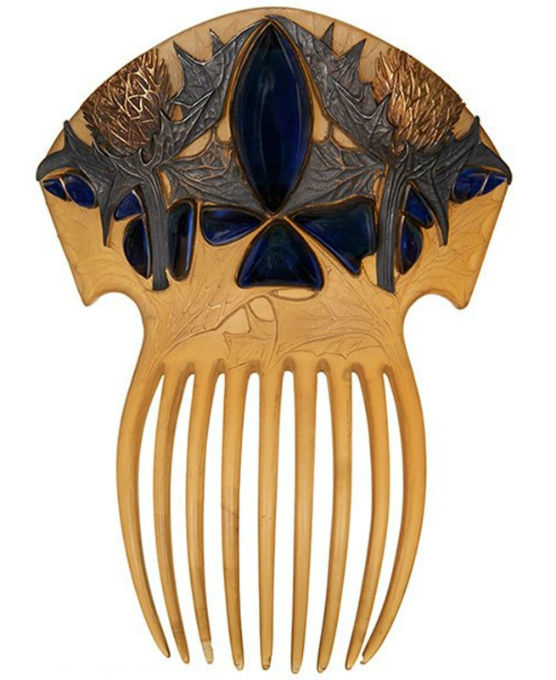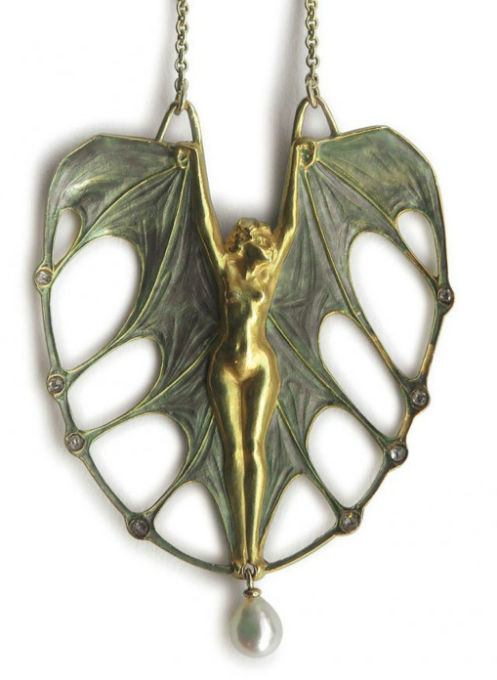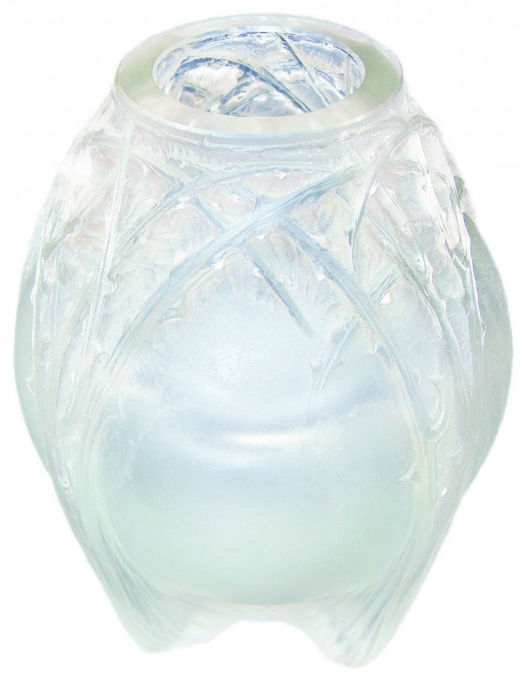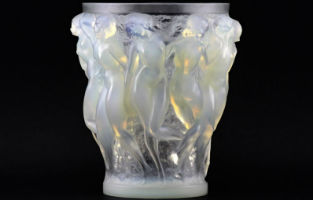
NEW YORK — Few names in the luxury art market are more recognizable and enduring than Lalique. Even more than 70 years after the death of its founder, René Lalique, the company is going strong in its 130th year.
Before being a renowned glassmaker, René (1860-1945) got his start at age 16, apprenticed to a jeweler after his father died. He became so talented that his skills were sought as a freelance designer by many leading jewelers in Paris within five years. He launched his own workshop in 1885, which would go on to become the best known in the city. In 1907, he began making highly decorative perfume bottles for Coty and later glass objects, including the glass vases for which he is famous. The Coty-Lalique collaboration totally changed the perfume industry and was the first time perfume could be offered in such elegant bottles at a reasonable cost.

“Glass is a marvelous material,” René said in 1925, and the contrast between clear and frosted glass in his works speaks of the mutable quality of the material as well as to his artistic vision. Lalique Glass, as it came to be known, made its public debut in 1912 when he mounted an exhibition at his Place Vendome shop and he soon racked up awards, accolades and high-profile commissions. Lalique’s glass hood ornaments, or “mascots,” are also highly prized by collectors today. He made about 30 models of these decorations for cars back in 1925-1931, including “Victoire” (modeled as the spirit of the wind), falcons, horses, nude females and mermaids (a few were originally made as statuettes but repurposed as car mascots). Originally retailing for around $50, his hood ornaments can cost in the mid to high five figures today.

A product of his upbringing in the French countryside, René found his design inspiration in the natural world and this was a central motif in his jewelry. Like many other Western artists in the Art Nouveau period, he was also influenced by the Far East. “As early as 1888, he designed his first parures in finely wrought gold inspired by antiquity and japonism, and broke with jewelry-making tradition by including innovative materials in his pieces,” according to the company website, Lalique.com. “At the time, originality and creativity had been abandoned in favor of ornate and lavish styles with an abundance of precious stones. Lalique made the materials he used central to his designs. He chose them for their power, light and color, whether they were precious or not. He combined gold and gemstones with semi-precious stones, mother-of-pearl, ivory and horn, in addition to enamel and glass.”
René intently studied properties of glass and he employed a variety of glassmaking techniques in is work. While he pioneered a mechanical approach to the manufacture of glass objects, this was anything but mass production as each item was touched by human hands many times during production.
“This customized production is what sets Lalique glass apart in beauty and quality,” according to the Corning Museum of Glass, which produced the 2014-15 exhibition, “René Lalique: Enchanted by Glass.” The show presented nearly 200 objects dating 1893-1942, from rare design drawings, jewelry and medallions to perfume bottles, automobile mascots, tableware, desk and smoking accessories, and decorative vases.

“We seem to have Lalique in most every auction,” says Kevin Patrick Taylor, general manager at Kodner Auctions in Dania Beach, Fla. Offerings in the past here have ranged from reasonably priced pieces like a pair of swimming swans on a mirror base to sought-after large cactus tables that retail for about $120,000. Of the latter, he says, “The whole base is made by Tiffany in a cactus form. Kodner has also had several great Lalique Bacchantes vases in different colors that performed well. “The opalescent ones particularly are very desirable. Those are extremely collectible,” he says, adding that they had some that sold in excess of $30,000.
“It’s a brand that has transitioned into modern taste as well. So many pieces these days from the 19th century fell out of favor as people went to more modern tastes. Lalique seems to transition from a traditional interior to more modern interiors.”



